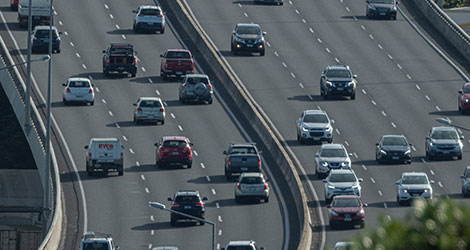
Mind maps, risk assessments and method statements
Posted on October 10, 2023
Having proper health and safety should never be a tagged-on afterthought. I’ve been advising on good health and safety and running training courses for that long now that I almost have a radar for it. I walk into places and see fire extinguishers and fire escapes; I see how much money has been spent on paint on the roads – it’s what I do and I just can’t help it anymore.
Good design
The fact is I love health and safety when it’s not ‘hard hat and big sign’. I like health and safety when it’s things like a well-placed handrail, or a change in colour and texture in flooring to prevent a trip hazard. That’s good design because someone has thought about what could go wrong.
One of my favourites is one that lots of us benefit from every day, probably without fully realising it.
At every underground railway station that you visit the top and bottom stairs will always be yellow while all the others are white. This is about encouraging people to behave in a way that they are unaware of, want or intend to behave in, but it’s been designed in such a way that they find it difficult not to behave in the way that you want them to. That’s the very definition of good health and safety.
Quality propositions
It all starts with a mind map, which leads to your risk assessment and your method statement. The mind map is just a great thing to do at the start of any business’s journey. It’s about anticipating risks to that business’s success. So ‘risk’ doesn’t just mean something physical or mental, but whether you are putting the right foundations in place from which you can grow and succeed and that’s about having a quality proposition from the start.
It all needs to be done in a fluid way – get everything down on paper and the rest will follow. A mind map is a diagram in which information is represented visually, usually with a central idea placed in the middle and associated ideas arranged around it. A risk assessment is a systematic process of identifying hazards and evaluating any associated risks within a workplace, then implementing reasonable control measures to remove or reduce them, using a method statement – the who, what, where, when and how.
It’s magic
Often, I am not there at the start of a business. They are already underway – things are being built or made – and then when they are asked for documents, my phone rings. It’s not a bad way to do it, because they are finding out things as they proceed. My approach is not to tell people how to do their business, but to encourage people to take that ‘cup of coffee time’ to think about what could go wrong. I don’t know their business, intimately, but the things that can go wrong are usually the same in each business, such as being let down by equipment, by people, by weather.
For example, my nephew runs an executive travel business and, in his case, it’s about drivers turning up ahead of an appointment and vehicle cleanliness amongst other things. This has got nothing to do with a hazardous substance or a potential fall from height, but the approach to the risks is the same.
If you can think of the things that can go wrong then you start to identify control measures that you can put in place to mitigate the damage if it does go wrong. With that heightened awareness, you are more likely to take action to put preventative measures in place and therefore stop it from going wrong. That’s how it works; that’s the magic of it.
One game at a time
It’s the same in the sports arena. Jurgen Klopp thinks about the team his team is going to face – “one game at a time”. He analyses their strengths and weaknesses to try to ensure that things don’t go wrong for his team, the risk to their success, VAR notwithstanding! You don’t know whether you are going to be good at health and safety or whether you were lucky. If there are no problems then was it your approach or Lady Luck’s intervention? If you apply health and safety practices to how you set up and operate your business you will be luckier, because you will be putting things in place to make your success more likely.
Pieces of paper
And it all starts with those pieces of paper. You can show someone what you were thinking and you can prove it. And if something happens and you go back to that risk assessment and ask why didn’t I think of that – then you can add it and it can help you identify other things and improve.
Bottom line is, applying the discipline of risk control will improve how a business is run.
